Poodle Skirts, Pencil Skirts, Swing Skirts-Which Do You Prefer?
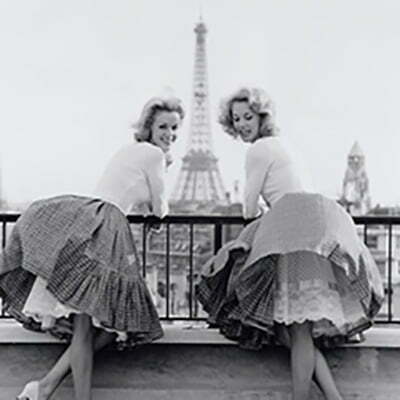
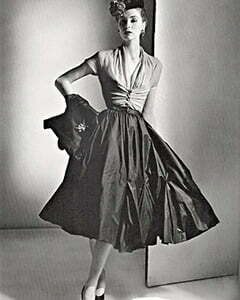 Some of the most popular skirts designs today like the circle skirt, poodle skirt, swing skirt, wiggle, and pencil skirts can all trace their origins to the 50s. Perhaps no other decade has had such a big influence on the design of the skirt like the 50s and its variety in skirt design. The 50s were a good time for many women, as money was back in the pockets and they could afford to buy silk or satin items. Christian Dior’s new look from the late 40s was still trending strongly in the early 50s. Skirt waists became wasp-like, the A-shape became fuller and billowy at the bottom, and hemlines dropped back to mid-calf length. The conical fitting pencil skirt also emerged in the early 50s and became a favorite with working-class women.
Some of the most popular skirts designs today like the circle skirt, poodle skirt, swing skirt, wiggle, and pencil skirts can all trace their origins to the 50s. Perhaps no other decade has had such a big influence on the design of the skirt like the 50s and its variety in skirt design. The 50s were a good time for many women, as money was back in the pockets and they could afford to buy silk or satin items. Christian Dior’s new look from the late 40s was still trending strongly in the early 50s. Skirt waists became wasp-like, the A-shape became fuller and billowy at the bottom, and hemlines dropped back to mid-calf length. The conical fitting pencil skirt also emerged in the early 50s and became a favorite with working-class women.
A-shape Skirts
Christian Dior’s ‘New Look’ was the perfect look with its borrowed influences of the good times of the Victorian era. His designs changed 1950s women’s fashion in a big way. He designed a skirt that was full in the figure using lots of fabric. Unlike the Victorian skirt, the new look reached to the mid-calf and used less-rigid material to achieve its fullness. This skirt was luxurious and opulent, made with 3-5 yards of fabric.
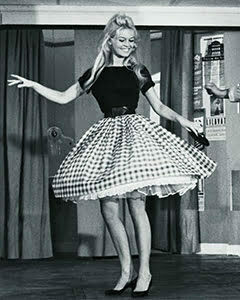 The design started with a waistband that was 2-3 inches wide and fastened using a zipper or buttons. The waistband went above the natural waistline to create a narrower profile. A wide belt could also be worn above the waistband to gather the midriff for a more waspish figure.
The design started with a waistband that was 2-3 inches wide and fastened using a zipper or buttons. The waistband went above the natural waistline to create a narrower profile. A wide belt could also be worn above the waistband to gather the midriff for a more waspish figure.
The skirt blew outwards at an angle with the help of rigid material to create a wide-angled A-shape that ended with a wide and billowy hemline. The accepted length was at mid-calf although some fashion designers experimented with knee-length designs for their bolder clients. The shorter wide skirt was popularly known as the swing skirt. It was popular with many women because the billowy hemline allowed for freer movement for tasks at home, or dancing night out.
The preferred material for swing skirt was cotton broadcloth because it gave designers an easier time when using gathers. Fashionable skirts like Sunday best wear were made from wool which was more rigid and able to hold the full figure better. But all this volume made the skirt heavy and uncomfortable to wear for a long time. Women wore hoops and petticoats for more comfort in this skirt. The most expensive skirts were made from comfortable and luxurious satin and silk material. These were lighter to wear and cooler in warm weather.
The full circle swing skirt was made from a single piece of fabric. It was less rigid and swung perfectly when walking or dancing. This design was particularly popular with teenage and college girls.
Gathers were used in alternative designs to make skirts look fuller. It was made of a single rectangular piece of fabric. The waist was made narrow using gathers, which made the skirt fill out instantly below the waistband. These skirts were very popular with women of a slimmer profile.
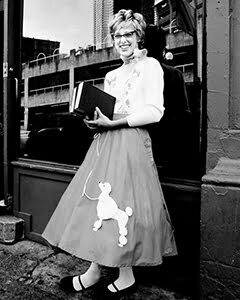 Pleated skirts used pleats instead of gathers, while gored skirts were made from triangular pieces. The peasant-style tiered skirt was made from several layers narrowing towards the waist.
Pleated skirts used pleats instead of gathers, while gored skirts were made from triangular pieces. The peasant-style tiered skirt was made from several layers narrowing towards the waist.
Poodle skirts were decorated at the hemline. Popular decorations were poodles (hence the name), cats, martini glasses, and popular landmarks such as the Eiffel Tower. Some featured catchy phrases. These decorations were embroidered onto the fabric or designed with attached sequins. This colorful skirt design was a big hit with teen and pre-teen girls. older women wore more ‘serious’ graphics.
Pencil Skirt
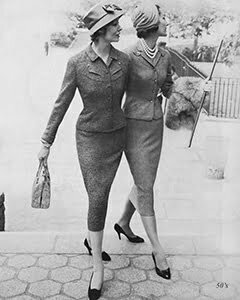 The pencil skirt was in contrast to the swing skirt, with its conical tapered design, and was a big trend in the 1950s clothing style. It was also popularly known as the hobble skirt because it hindered natural paced walking. The skirt dropped straight from the waistband or tapered in slightly. It was perfect for women with fuller hips. the narrow bottom made women walk in a wiggly manner hence the ‘wiggle skirt.’ The mermaid widened out at the bottom to enable women to move comfortably when dancing.
The pencil skirt was in contrast to the swing skirt, with its conical tapered design, and was a big trend in the 1950s clothing style. It was also popularly known as the hobble skirt because it hindered natural paced walking. The skirt dropped straight from the waistband or tapered in slightly. It was perfect for women with fuller hips. the narrow bottom made women walk in a wiggly manner hence the ‘wiggle skirt.’ The mermaid widened out at the bottom to enable women to move comfortably when dancing.
Pencil skirts were popular with older working-class women but bold young ladies also wore them to the occasional formal event.
